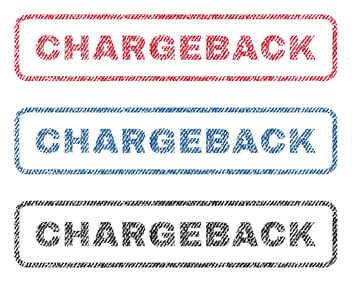Comprehensive Chargeback Management Guide - Part 1
Part 1: What is a Chargeback?
This is the first part of a multi-part blog series focusing on chargebacks. As the other parts are published, links to them will be placed below.
What is a Chargeback?
A chargeback is the result of a customer disputing a charge on their credit/debit card. They can be initiated for a variety of reasons, but all lead to the same result; money paid to your organization is removed from your bank account and returned to the customer without your consent. The chargeback process is designed to increase customer confidence, but, unfortunately for business owners, has become a tool for part-time fraudsters to get free stuff. The fraudulent use of chargebacks is often called “chargeback fraud,” “friendly fraud,” or “online shoplifting.”
The History of Chargebacks
Chargebacks trace their origins back to The Fair Credit Billing Act of 1974. This federal law was designed to protect consumers from unfair business practices and give them recourse for recovering funds. When this law was passed, commercial internet was still 15 years away, so no one could foresee the implications this process would lead to down the road. As E-commerce became more popular and fraud and identity theft became more prevalent, chargebacks became more common. For many years, businesses considered chargebacks a cost of doing business. As consumer awareness of the process increased and the number of unsubstantiated claims began leading to more and more lost revenue, many businesses now attempt (usually unsuccessfully) to dispute chargebacks. What was once a process designed to protect the honest consumer from deceptive businesses has now become a tool for deceptive consumers to take advantage of honest businesses.
Most common reasons a customer will request a chargeback.
Chargebacks can be initiated for many reasons, but the most common ones are:
- Duplicate charges or Incorrect amount of charge
- Processing or Authorization Errors
- Customer disputes, claiming a lack of products/services provided or inadequate performance of the business
- Fraudulent transactions resulting from identity theft
Every credit card company has their own list of reason codes for chargebacks, with detailed descriptions of them. These codes are listed in chargeback guides released by the credit card companies, whose PDF’s are linked below.
American Express Chargeback Guide
These guides also have lots of useful information about the entire chargeback and dispute process, but can be overwhelming. This series of blog posts will try to simplify and summarize some of these complex processes.
Chargeback Fraud
If there is a system designed to protect honest people, there is always someone trying to abuse it. The case is no different with chargebacks. While huge companies like Amazon can afford to write-off chargebacks, most businesses cannot. There are many ways to commit chargeback fraud. One of the most common is to order a product from an online store, then claim it never arrived and initiate a chargeback. The customer has now received the product they ordered for free. This is just one of many schemes that will be outlined in part 3.
Can My Organization Prevent Chargebacks?
Yes and no. It is impossible to prevent all chargebacks from happening, but there are several options for reducing their likelihood. These options range from using a PCI compliant payment portal (like CBOSS), having well defined return policies and contracts, and possibly using a chargeback management service. These options will be discussed in detail in part 4 of the blog series.
How Can I Successfully Dispute a Bad Chargeback?
Even though the odds are not in your organization’s favor when it comes to disputing chargebacks, and it is a long and confusing process to do so, there are ways to improve your chance of success. The most important piece to this puzzle is understanding that difficult process. These processes are outlined in the guides linked above. Since the burden of proof falls solely on your organization, it is important to collect evidence that can prove the legitimacy of the transaction. The dispute process and appropriate evidence will be described more in-depth in part 5.
Now that you know what chargebacks are, where they came from, and why they are initiated, the next post in this blog series will discuss why your organization should be concerned about them.


